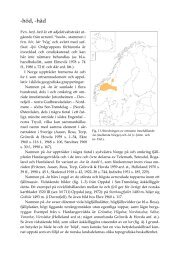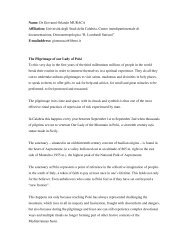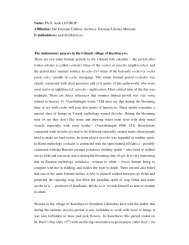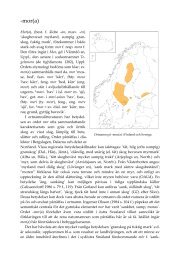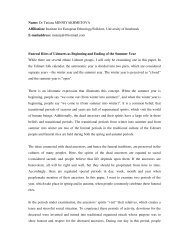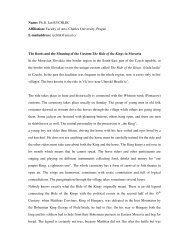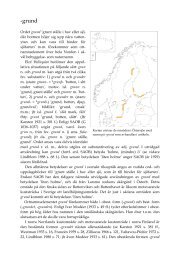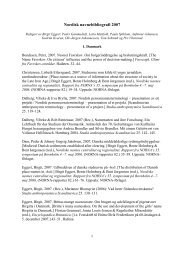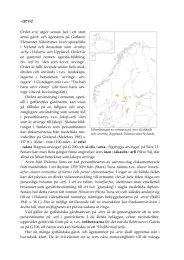NORNA-RAPPORTER 88 Binamn. Uppkomst, bildning, terminologi ...
NORNA-RAPPORTER 88 Binamn. Uppkomst, bildning, terminologi ...
NORNA-RAPPORTER 88 Binamn. Uppkomst, bildning, terminologi ...
You also want an ePaper? Increase the reach of your titles
YUMPU automatically turns print PDFs into web optimized ePapers that Google loves.
Coming to grips with the multifacetedness of bynames 41<br />
These two components of language are interdependent and interrelated by<br />
innovation and tradition, with innovation taking place in pragmatics and tradition<br />
being maintained by recourse to grammar. Innovations like bynames<br />
as such or particular bynames can be habitualised by recurrent use and finally<br />
be conventionalised and saved in the individuals’ grammars, that is to say,<br />
original innovations establish traditions. This kind of process results in language<br />
change, or rather, this process is language change. Traditionally,<br />
mainstream schools of linguistic thought have concentrated on either pragmatics<br />
or grammar and ignored the other component or aspect of language,<br />
thus disregarding the nature of language. Depending on the prevailing mood<br />
of the moment, onomastics has neglected but not totally ignored either component.<br />
3. Facets of the gem<br />
As it is especially the pragmatics of bynames that has been neglected, I will, to<br />
begin with, touch upon a number of pragmatic facets of bynames (for more details,<br />
see Brendler 2009), followed by grammatical facets (for more details, see<br />
Brendler 2006, pp. 161–226), perspectival-<strong>terminologi</strong>cal facets (Brendler<br />
2008) and science-compartmental facets (Brendler 2006, pp. 142–146). Pragmatic<br />
facets include:<br />
Firstly, the life cycle of bynames. It potentially includes six stages:<br />
(1) the search for, or formation of, a byname,<br />
(2) bestowal,<br />
(3) use,<br />
(4) death,<br />
(5) afterlife and<br />
(6) revival of a byname.<br />
Secondly, aspects of the genesis of bynames such as:<br />
(1) cause (why a byname?) and motivation (why this particular byname?).<br />
This is where the relationship of motivation and onomasiological principles<br />
(Herbermann 1998) comes in, which opens up an opportunity to indicate the<br />
relationship of onomastics and onomasiology explicitly. For this purpose each<br />
onomasiological principle relevant to bynames is followed by at least one prototypical<br />
motivational class of byname corresponding to it:<br />
(a) The topological principle (bynaming after a place to which the bynamed<br />
person is somehow related) applies to local bynames (e.g. bynames<br />
of origin/residence, [in the case of foundlings] bynames after the site of discovery).<br />
(b) The genealogical principle (bynaming after a related person) applies<br />
to bynames of relationship (e.g. patronymic bynames, metronymic bynames,<br />
teknonymic bynames [bynames based upon a child’s name]).



